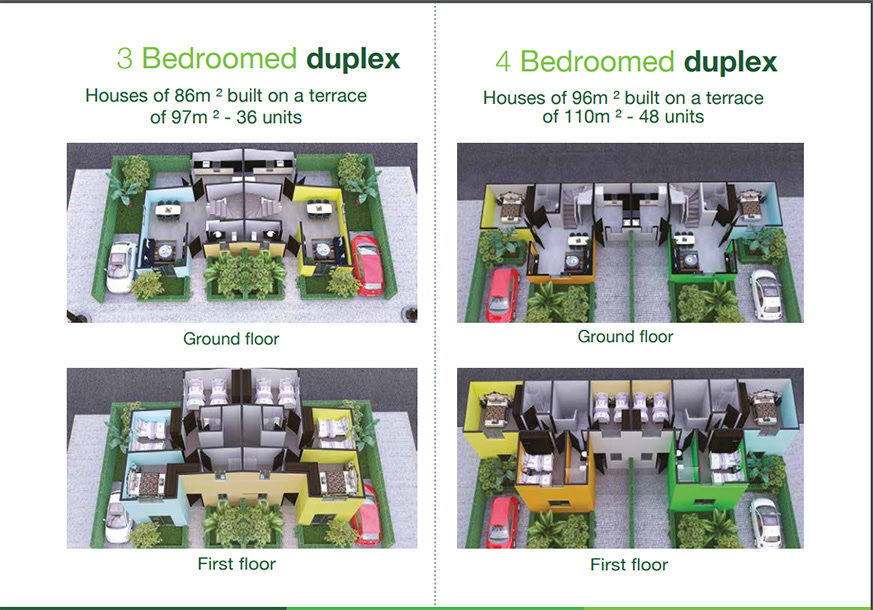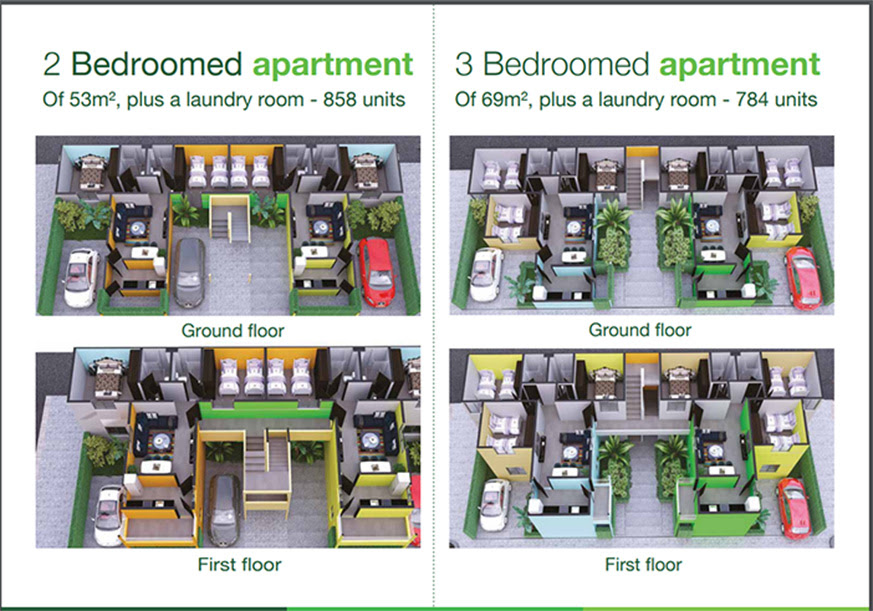The New Times
Rwanda
The project promises to develop 1,750 housing units in the first phase. The cheapest property under the project is valued at Rwf27 million.
Rwanda Development Bank (BRD) this week unveiled a housing project, which promises to partly address the shortage of affordable housing in the country.
The bank called on the public to express commitment of interest in the Ndera Affordable Housing Project.
The project follows a 2016 partnership agreement between the lender and a Moroccan real estate developer, Palmeraie Development Group, reached during the visit of King Mohammed VI of Morocco to Rwanda.
Palmeraie Development Group brings about 30 years of experience to Rwanda’s real estate market.
The project promises to develop 1,750 housing units in the first phase. The cheapest property under the project is valued at Rwf27 million. The project is also a shift from the traditional bungalow style to apartment blocks.
Properties are moderately sized as two and three bedroomed apartments.
Specifically, the project targets Rwandans who earn a monthly income of between Rwf200,000 and Rwf1.2 million.
The Chief Executive Officer of BRD, Eric Rutabana, explained that targeting this income bracket was informed by studies and analyses, which showed that the current real estate market rates often locked them out.
The beneficiaries will be required to pay monthly installments not exceeding 40 per cent of their net monthly income.
The real estate project is implemented under a joint venture by BRD and Palmeraie Development Group with equity injections in the ratios of 25:75, respectively.
The first phase is estimated to cost $35 million.
Those behind the joint venture are also approaching other financiers with interest in investing in the project.
In 2016 when the agreement was signed, it had been announced that Bank of Africa was keen on investing in the project.
The real estate project comes at a time when there have been widespread concerns of fast real estate valuation and prices which a section of stakeholders say is a result of market forces of demand and supply as well as cost of inputs.
A section of Rwandans are also wary of housing project models following instances where they have turned out somewhat fraudulent leading to unending court cases.
For a section of Rwandans, their first introduction to housing estate projects was projects such as DN International (now defunct) and Ujenge’s Palm Estates (under receivership).
The problematic nature and resulting losses made a section of Rwandans wary of such housing projects with some stakeholders fearing that it could see the sector lose public confidence.
Rutabana told The New Times that they were well aware of the concerns, hence not requiring deposits until the housing units were complete.
“In this project we are not taking any deposits from potential homeowners until the project is complete,” he said.
The only requirement is that potential home owners provide evidence that they have their contributions ready or can secure mortgages from other financiers. This could see an increase in demand of mortgage products among local financial institutions.
“We are hoping that this model could help raise confidence in the local real estate market and be replicated in the future to reduce exploitation of the market as has happened in the past,” he said.
According to the 2016 agreement, Palmeraie Development Group committed to a total of 5000 housing units in multiple phases as stakeholders identify sites for construction of the units.
A previous a study by the City of Kigali, the Ministry of Infrastructure, and the European Union showed that Kigali could face a housing deficit of 344,000 homes by 2020.
Presently, between 800 and 1,000 housing units are constructed in Kigali annually, the majority targeting high-income earners, leaving the majority of city dwellers without decent housing options.
To address the housing shortage, the city needs to build at least 31,000 housing units annually, according to the study. Low and middle-income earners were found to make up about two-thirds of all new housing demand.
Kigali’s population stands at about 1.2 million people and is projected to reach 3.8 million by 2040.
editorial@newtimes.co.rw









